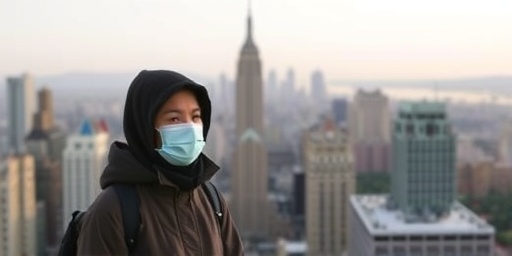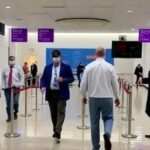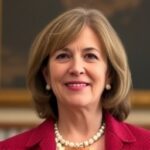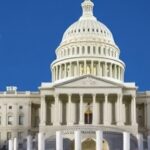Los Angeles County health officials confirmed the first influenza-related death of the 2024-2025 Flu season on Wednesday, sounding the alarm as cases begin to climb and urging all residents to get vaccinated without delay. The fatality, involving an adult with underlying health conditions, underscores the virus’s potential lethality even early in the season, according to the Los Angeles County Department of Public Health (LAC DPH).
“This tragic loss reminds us that Flu can be deadly, particularly for those most vulnerable,” said Dr. Barbara Ferrer, LAC DPH Director. “With Flu activity expected to rise sharply in the coming weeks, now is the time for everyone eligible to receive their annual flu vaccination.” Officials reported a total of 147 flu-related hospitalizations in the county so far this season, a number poised to increase as holiday gatherings and cooler weather drive transmission.
Victim Profile Highlights Flu’s Toll on High-Risk Groups
The first confirmed flu death in Los Angeles involved an adult resident over the age of 65 with pre-existing medical conditions, though specifics such as exact age or location were withheld to protect privacy. Public health experts emphasized that while influenza affects all ages, it disproportionately impacts the elderly, young children, pregnant individuals, and those with chronic illnesses like diabetes, heart disease, or weakened immune systems.
Historical data from LAC DPH reveals that in the 2023-2024 flu season, Los Angeles County recorded over 1,200 flu-associated deaths, with more than 70% occurring among seniors. Nationally, the CDC estimates flu causes 12,000 to 52,000 deaths annually in the U.S., with the current season’s dominant strain, H3N2, known for its severity in older populations. “This death is a wake-up call,” noted Dr. Ferrer in a press briefing. “Vaccination remains our strongest defense, reducing the risk of severe illness by up to 60% even in mismatched years.”
Local surveillance data shows flu positivity rates in county testing sites jumping from 5% in late October to 12% last week, signaling widespread community spread. Hospitals like Cedars-Sinai and UCLA Medical Center have reported increased admissions for flu complications, including pneumonia and respiratory failure.
Flu Activity Spikes Signal Peak Season Ahead for L.A.
Los Angeles County is bracing for a robust flu season, with officials projecting a sharp uptick in cases through January and February, mirroring patterns from previous years. The California Department of Public Health reported over 500 flu deaths statewide last season, and current wastewater surveillance indicates elevated influenza levels across Southern California.
Compared to national trends, L.A.’s flu activity aligns with CDC’s classification of “high” in the Pacific region. Key metrics include:
- 147 influenza hospitalizations YTD (up 40% from the same period last season)
- Over 2,500 confirmed flu cases countywide
- 15% of emergency room visits attributed to flu-like illness
“We’re seeing the leading edge of what could be a challenging season,” warned Dr. David Kim, LAC DPH Chief Medical Officer. Factors fueling the rise include waning population immunity post-COVID, lower vaccination rates among adults (hovering at 45% last year), and the circulation of influenza A(H3N2), which often hits harder.
Experts point to social behaviors as accelerators: Thanksgiving travel is expected to bring 55 million Americans on the road, per AAA projections, many converging in densely populated L.A. County. School outbreaks have already surfaced in districts like Los Angeles Unified, with 20 campuses reporting clusters.
Vaccination Push Targets Lagging Uptake in Key Demographics
Despite proven efficacy, flu vaccination rates in Los Angeles lag behind national goals. Only 52% of county seniors and 40% of children under 5 have received shots this season, per LAC DPH tracking. Public health campaigns are ramping up, with free or low-cost vaccines available at pharmacies like CVS, Walgreens, and county clinics.
“Getting vaccinated not only protects you but your community through herd immunity,” stressed Dr. Ferrer. The quadrivalent flu vaccine targets four strains, including the prevalent H3N2, and is safe for most from six months onward—even alongside COVID-19 boosters.
Accessibility is a priority: Drive-thru sites at SoFi Stadium and the Pomona Fairplex have vaccinated over 10,000 residents since November. For underserved areas like South L.A. and East L.A., mobile units are deploying to community centers. Quotes from residents highlight barriers: “I didn’t realize it was so urgent,” said Maria Gonzalez, a mother in Boyle Heights, after getting her family vaccinated at a pop-up clinic.
| Group | Vaccination Rate (2024-2025 YTD) | Last Season |
|---|---|---|
| Seniors (65+) | 52% | 48% |
| Children (6m-4y) | 40% | 42% |
| Pregnant Women | 35% | 38% |
| Adults 18-64 | 45% | 43% |
Data underscores the need for targeted outreach, including multilingual materials in Spanish, Korean, and Armenian to reach L.A.’s diverse 10 million residents.
Safeguarding Vulnerable Communities Amid Flu Surge
Public health strategies in Los Angeles are laser-focused on at-risk groups. High-risk zip codes like 90011 (South L.A.) and 91731 (San Gabriel Valley) are seeing intensified interventions, including school absenteeism monitoring and senior center screenings.
Symptoms to watch include fever over 100°F, cough, sore throat, body aches, and fatigue lasting over four days. Antivirals like Tamiflu are most effective within 48 hours of onset, reducing hospitalization risk by 40%. “Early testing and treatment save lives,” advised county epidemiologist Dr. Sunita Mehta.
Non-vaccine measures include hand hygiene, masking in crowds, and staying home when sick. For the homeless population—over 75,000 in L.A.—outreach teams from PATH and the county are distributing masks and hygiene kits at encampments.
Employers are encouraged to offer paid sick leave and flexible work, as mandated by California’s AB 1041. Pediatricians report a 25% rise in child flu cases, prompting reminders for RSV and COVID co-testing.
Community Action and Resources Gear Up for Flu Fight
As flu season intensifies, Los Angeles residents have robust resources at their fingertips. Download the LAC DPH Flu Finder app for nearby vaccination sites, or call 211 for transportation assistance. Major insurers cover shots at no cost, and uninsured individuals qualify via the Vaccines for Children program.
Looking ahead, officials anticipate peak flu activity coinciding with holiday peaks, potentially straining hospitals already at 85% capacity. Federal funding via the CDC’s Bridge Access Program ensures free vaccines for adults through spring 2025.
“We can prevent more tragedies by acting now,” Dr. Ferrer concluded. “Vaccinate, test, treat, and protect our public health infrastructure.” Community leaders, including the L.A. Chamber of Commerce, are promoting workplace vaccination drives, while faith-based organizations host clinics at churches and mosques.
With winter storms forecast, indoor gatherings pose added risks, but proactive steps can blunt the flu’s impact. Stay informed via lacounty.gov/flu or CDC.gov/flu for real-time updates. L.A.’s resilience against past pandemics positions it well, but collective vigilance is key to minimizing deaths and hospitalizations this season.









